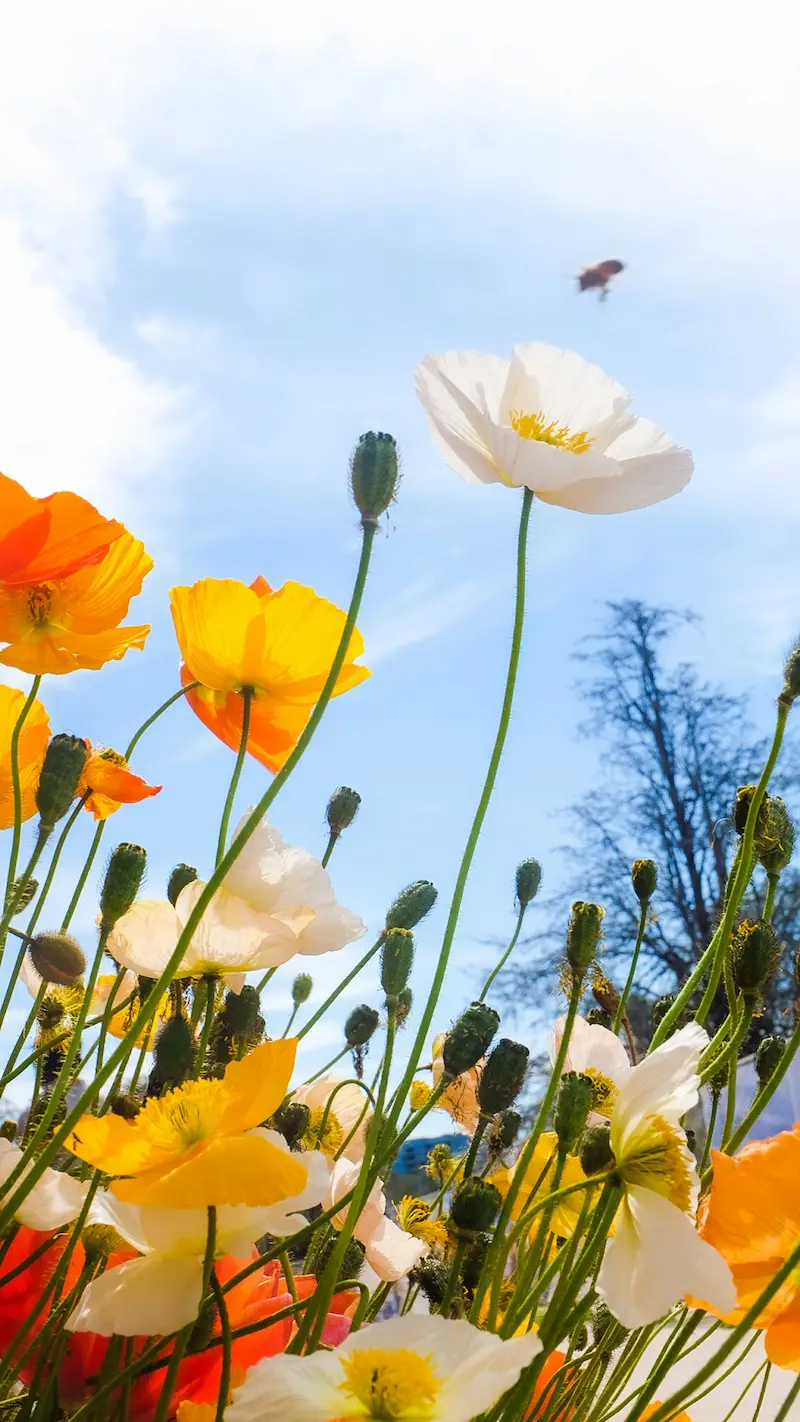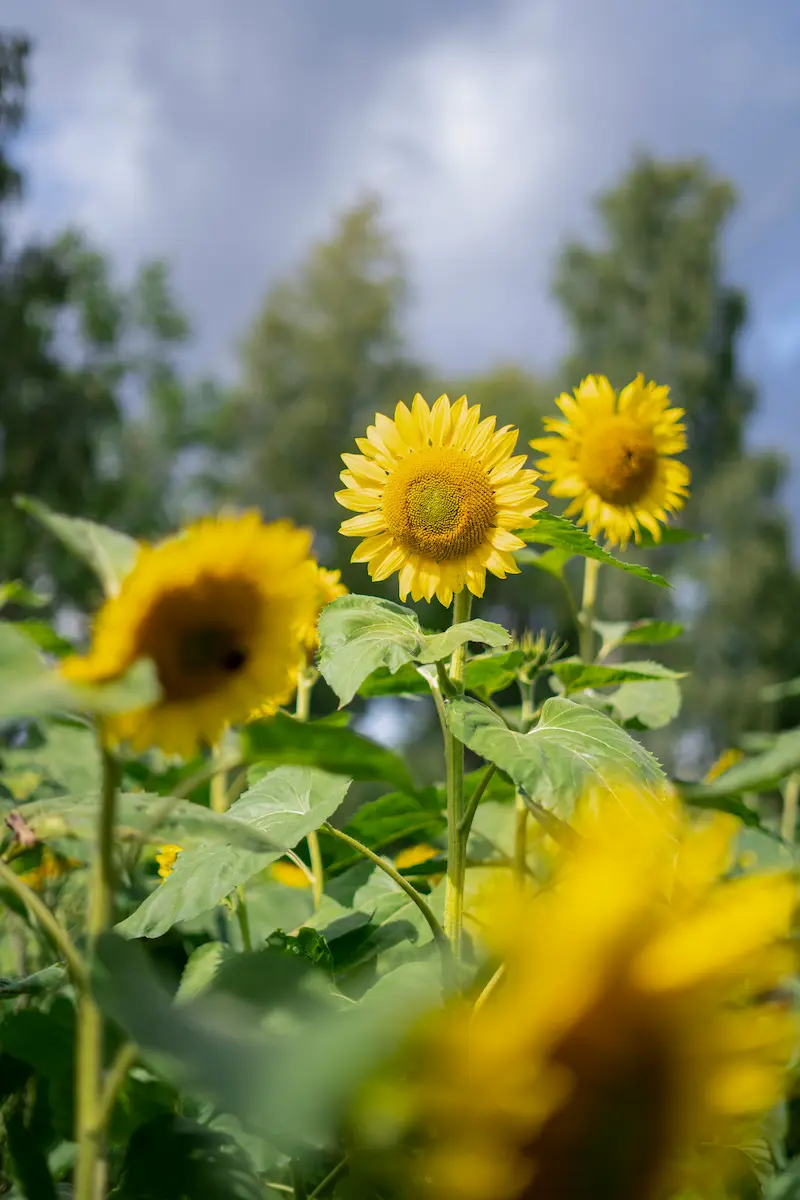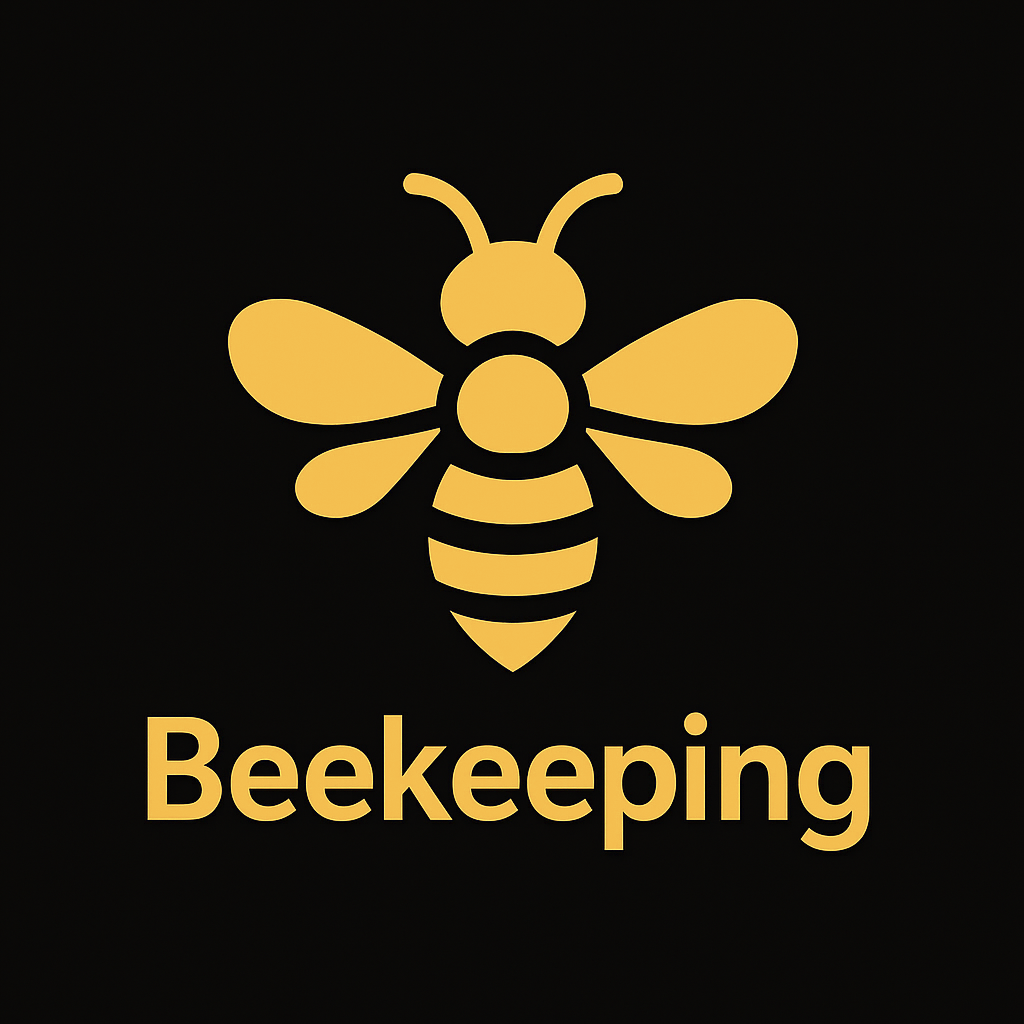Year in the Apiary – Monthly Beekeeping Calendar for the UK
Honey bees share the same weather and seasons that we do, but they experience them very differently. A warm February afternoon, a run of wet days in May or a late frost in April can change how quickly colonies build up, when swarming starts and how well nectar flows. A monthly beekeeping calendar helps you link what is happening in the hive to what is happening outdoors.
This Year in the Apiary guide is written for a cool, temperate UK climate. It is designed for new and experienced hobbyist beekeepers who want a practical monthly beekeeping calendar for the UK that does more than just list jobs. For each part of the year you will find:
- what the bees are trying to do, in biological terms
- typical apiary tasks by month
- weather, nectar flow and regional differences to watch for
- links to the monthly “What to do in the apiary” guides
Use this calendar alongside your local beekeeping association, mentors, BBKA materials and official guidance from the National Bee Unit and BeeBase. The dates in any beekeeping calendar are a guide; the frames in front of you and your local weather always have the final say.
Download the printable Year in the Apiary calendar
Prefer something you can pin to the shed door or keep in your beekeeping folder? Use either the quick PDF overview or the full detailed strategy document below.
Use these alongside the detailed monthly pages below when planning your inspections, feeding, swarm control and winter preparation.
At a Glance – The UK Beekeeping Year
The summary below shows the broad rhythm of the UK beekeeping year. Each month has its own detailed page with a fuller checklist and local notes.
January
Bees are clustered, using stored food. Your job is hive security and emergency feeding if needed.
February
Brood rearing often restarts. Food use increases sharply and cold snaps can still cause losses.
March
Colonies build up as weather allows. First full inspections become possible on warmer days.
April
Rapid brood expansion and first nectar flows in many areas. Swarm control planning begins.
May
Peak swarming season in much of the UK. Strong colonies, heavy inspections and supering.
June
Main honey flow month in many regions. Swarm risk continues; supers fill if weather is kind.
July
Honey crop often continues or tails off. Swarm risk reduces, but space and ventilation still matter.
August
Many beekeepers remove supers and begin varroa control. Late flows (like heather) are site-specific.
September
Focus shifts to winter preparation: feeding, varroa treatments and assessing colony strength.
October
Colonies settle down for winter. Entrance size, insulation and protection from pests matter most.
November
Quiet month in the apiary. Occasional checks for damage or top-up feeding, but minimal disturbance.
December
Bees are clustered again. Some beekeepers apply winter varroa treatments if appropriate.
How Seasons and Weather Shape a UK Monthly Beekeeping Calendar
A monthly beekeeping calendar UK is only useful if it respects the limits of bee biology. Bees maintain the brood nest at around 34–35°C. At low outside temperatures, more bees stay home to keep the cluster warm and fewer can forage. Wind, rain and nectar availability all interact with temperature to influence what you see on the frames.
Rule-of-Thumb Weather Guide for Inspections
The figures below are approximate and assume light winds and dry conditions. Local advice from mentors and your association always comes first.
| Outside conditions | Typical bee behaviour | What the beekeeper might do |
|---|---|---|
| Below 8 °C, wet or windy | Bees cluster, very little flight. | Do not open hives; check entrances and straps only. |
| 8–12 °C, light breeze | Short cleansing flights, limited foraging. | Brief checks at the crownboard, emergency feeding if required. |
| 12–15 °C, dry and calm | Regular flights, increasing brood rearing. | Quick but complete inspections if needed, especially in early spring. |
| 15 °C and above, settled weather | Strong foraging, brood expanding rapidly. | Full inspections, swarm control, supering and detailed hive management. |
When you read any monthly apiary notes, including the Year in the Apiary pages on this site, imagine shifting the whole calendar forwards or backwards depending on your local conditions. A warm, sheltered city garden will usually be ahead of an open, upland site.
Nectar Flow, Forage and Regional Differences in the UK
Another reason monthly beekeeping calendars can never be exact is forage. Flowering times vary between regions and even between neighbouring valleys. In some coastal or urban areas, bees may find something to forage almost all year, while other sites depend on a few key flows.
- Early flows – willow, gorse, crocus and early orchard blossom may support spring build-up.
- Main flows – oilseed rape, hawthorn, clover, lime and bramble often contribute to the main honey crop.
- Late flows – heather, ivy and some garden plants may provide late-season nectar and pollen.
The monthly notes on this site highlight typical UK forage, but nothing beats walking your own patch and talking to local beekeepers. Many associations discuss “What’s in flower?” at meetings or in newsletters, which helps put the calendar in context.
Seasonal Apiary Tasks – Spring, Summer, Autumn & Winter
Instead of listing every month again, this section groups the UK beekeeping year into four seasons. Each card links to the relevant monthly pages so you can see the detail when you need it.



Autumn – Feeding and Winter Preparation
- September – assessing stores, feeding and varroa treatments.
- October – finalise winter weight, check entrances and insulation.
- November – minimal disturbance, security and weatherproofing.
Quick reminder: If you carry out any varroa treatments using veterinary medicines, keep a treatment record and retain it for at least five years. See veterinary medicine records .

Winter – Survival and Planning Ahead
- Monitoring hive weight and emergency feeding with fondant if needed.
- Checking for storm damage, woodpecker or rodent activity.
- Reviewing notes from the whole year in the apiary and planning equipment and training for next season.
Feeding Strategies Through the Year
Feeding appears at several points in the year in the apiary. How, when and what you feed depends on temperature, colony strength and your aims. Overfeeding can cause problems just as surely as underfeeding.
- Winter and very early spring: Fondant or candy is often preferred, placed directly above the cluster. Liquid feeds are usually avoided in cold weather.
- Spring build-up: If colonies are genuinely short of food, light syrup may be used with care, being mindful of robbing and brood chilling when opening hives.
- Autumn: Heavy syrup is commonly used to build winter stores after honey is removed, before the weather becomes too cold for bees to process it.
Always follow current UK guidance, avoid feeding honey of unknown origin and be aware of robbing behaviour when feeding in late summer or autumn. The hive management and hygiene pages include more on feeding, equipment choice and disease risk.
Swarm Control Within the Monthly Beekeeping Calendar
Swarming is a natural way for honey bee colonies to reproduce, but unmanaged swarms can cause loss of bees, inconvenience to neighbours and disruption to honey production. A realistic UK beekeeping calendar treats March to June as the main risk period, with some variation by region.
Crowded brood box and bees hanging under frames
What it may mean: The colony is congested and may be preparing to swarm.
What you can do: Add space with supers or brood frames as appropriate and be ready to apply your chosen swarm control method when queen cells appear.
Eggs or larvae in queen cups on the bottom of frames
What it may mean: The bees are actively starting swarm preparations rather than just “practising”.
What you can do: Carry out your chosen swarm control method promptly and check for further queen cells every 7 days during the main season.
Single, well-fed queen cell in the middle of a frame
What it may mean: This can indicate supersedure rather than full swarming.
What you can do: Monitor closely, take good notes and seek local advice before making major changes, especially if the colony otherwise looks healthy.
Bees clustered outside the hive on warm days
What it may mean: This might be simple bearding due to heat or poor ventilation, or it may reflect congestion and swarm pressure.
What you can do: Check ventilation, shade and internal space on the next suitable day. Do not assume it is harmless bearding if you have not inspected recently.
Different methods (artificial swarm, nucleus creation, Demaree and others) suit different beekeepers. The monthly pages for April, May and June refer back to this section so you can follow the pattern that best suits your apiary and level of experience.
Preparing Colonies for Winter
A significant part of the year in the apiary is actually about looking ahead to winter, even in midsummer. Strong, well-fed, healthy colonies at the end of September are the result of many decisions made earlier in the season.
- Colony strength: Aim for enough bees to cover several frames of brood in late summer, with a good laying queen and solid brood pattern.
- Stores: Different hive types and regions require different store levels, but many UK beekeepers aim for roughly a brood-box full of capped stores equivalent once feeding is complete.
- Location and shelter: Hives should be level, secure and protected from the worst of wind and damp, while maintaining good ventilation.
Decisions about uniting weak colonies, replacing failing queens and dealing with heavily infested or diseased colonies are best made with reference to current advice from your association or bee inspector. The monthly pages for August, September and October walk through typical decision points.
Common Seasonal Beekeeping Mistakes (and How to Avoid Them)
New and experienced beekeepers alike can struggle to keep up with the monthly beekeeping calendar, especially in years with unusual weather. Some of the most frequent issues include:
- Relying on the calendar instead of the bees: Opening hives because the diary says so, rather than because the weather and bees are ready.
- Missing swarm preparations: Stretching inspections to two or three weeks in spring and early summer and finding capped swarm cells.
- Underestimating food use in late winter: Losing colonies in February or March after a cold snap because stores were just slightly too low.
- Rushing autumn tasks: Starting varroa treatments or feeding too late, leaving colonies weak or under-supplied before winter.
The monthly notes on this site highlight these risk points so you can build a realistic plan that fits your life, your bees and your local climate.
Year in the Apiary – Frequently Asked Questions
These questions summarise some of the most common queries from new and intermediate beekeepers about using a UK beekeeping calendar. They complement the detailed information above and the monthly “What to do in the apiary” pages.
- Do I have to inspect every week in spring and summer?
In most areas, weekly inspections during the main swarm season are a good aim, but bad weather or work commitments sometimes get in the way. When you do inspect, make it thorough and focused on queen cells, brood pattern and space. - Can I start beekeeping at any time of year?
The Year in the Apiary calendar helps you see what you might miss or need to prepare for if you start mid-season. Many new beekeepers find it easiest to begin in spring or early summer when training and nucleus colonies are more available. - Is this calendar suitable if I only have one hive?
Yes. In fact, a structured calendar can be especially helpful with a single colony because you have fewer direct comparisons. Good notes and regular observations become your main tools. - What about bee diseases and pests?
Disease management runs alongside seasonal tasks. The bee diseases and pests overview explains how bacterial, viral and parasitic problems fit into the yearly cycle, with links to foulbrood, varroa and hygiene guidance. - How can I record what I do each month?
Some beekeepers use a notebook; others prefer digital tools. The HiveTag web app allows you to log inspections, feeding, treatments and seasonal notes so that patterns across the year become easier to see.

